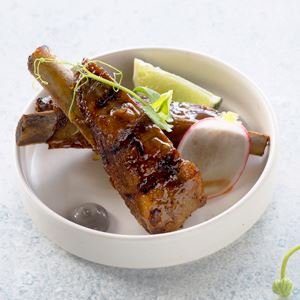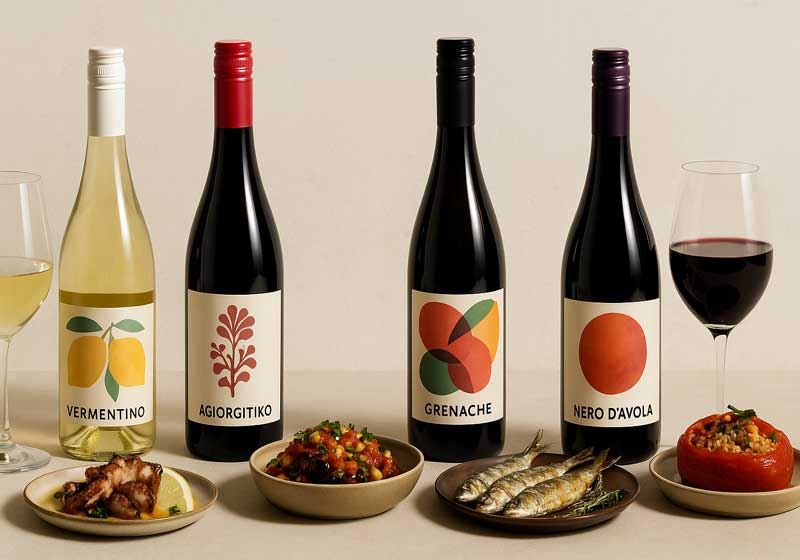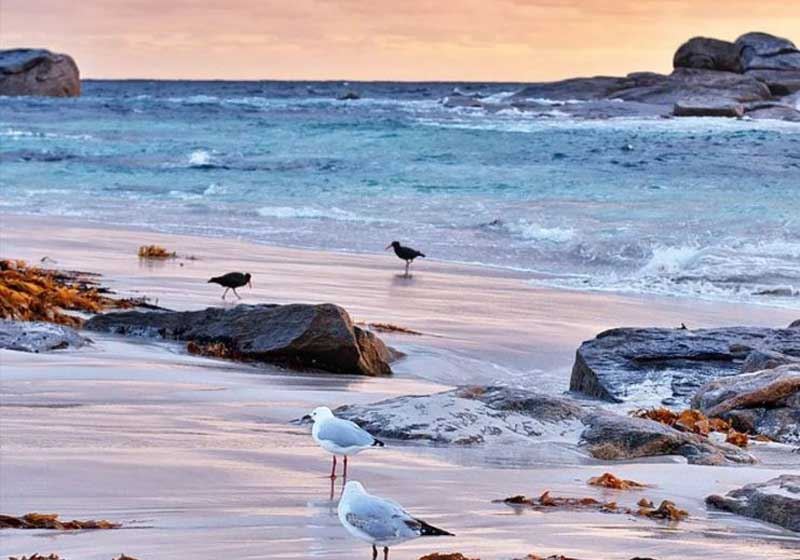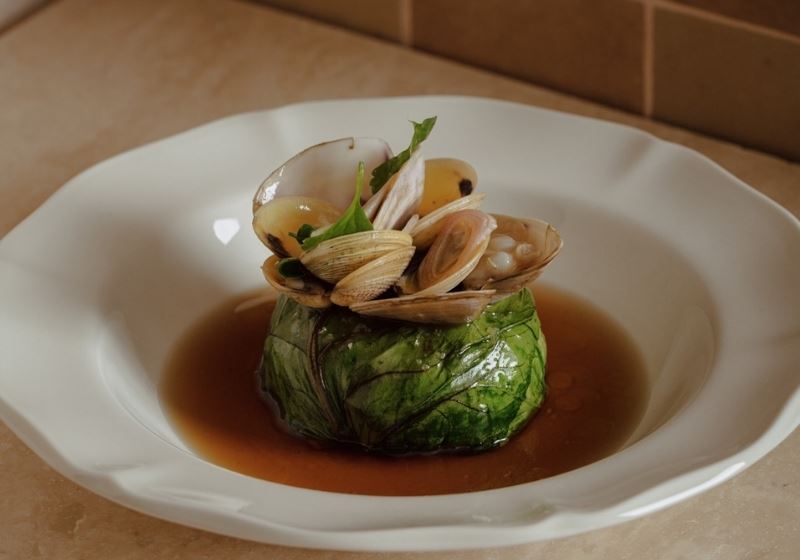Roast Duck and Lychee Red Curry - Chef Recipe by John Chantarasak.
4
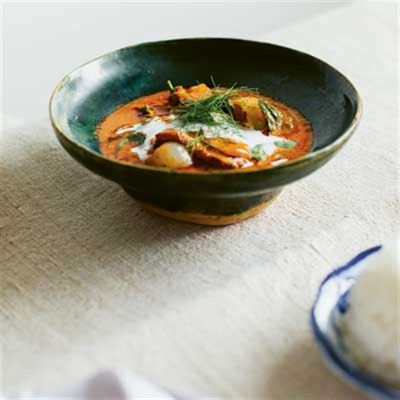
Ingredients
2 duck legs, about 135g each
1 Tbs black soy sauce
1 duck breast, about 150g
250mL coconut cream
2 Tbs palm or brown sugar
1 Tbs fish sauce
1 Tbs tamarind Water
150mL coconut milk
250mL chicken stock
100g lychees (fresh or canned; rinse off the sweet syrup if using canned)
4 makrut lime leaves (fresh or frozen), torn
3 Tbs Thai basil leaves
To serve:
Steamed jasmine rice
Pickled vegetables
Red curry paste:
12 dried long red chillies, seeded and soaked in cold water for 15 minutes until soft
1 tsp salt
2 Tbs thinly sliced lemongrass, root and outer husks removed
1 Tbs chopped galangal
1 tsp makrut lime zest
1 Tbs chopped coriander (cilantro) root or coriander stem
6 Tbs chopped shallot
4 Tbs chopped garlic
1 tsp shrimp paste
2 Tbs coriander seeds, toasted and ground to a fine powder
1 Tbs cumin seeds, toasted and ground to a fine powder
1/2 tsp nutmeg, toasted and ground to a fine powder
1 tsp white peppercorns, ground to a fine powder
Method
Preheat the oven to 170 C. To make the curry paste, pound all the ingredients together in a stone pestle and mortar until very smooth. Set aside. Alternatively, use a good-quality shop-bought red curry paste.
Rub the duck legs with the black soy sauce and roast in the oven for 45 minutes until the meat is tender and the fat has rendered.
Meanwhile, score the skin on the duck breast and place in a cold pan, skin-side down. Place over a low-medium heat and allow the fat to slowly render out from the duck skin for about 5 minutes.
After this time, there should be a noticeable amount of fat rendered and the skin will be golden brown and crisp. Transfer to the oven with the legs and roast for 5 minutes, then remove the breast from the oven and leave it to rest. This should produce a blushing pink breast, but if it’s not completely cooked through at this stage, it doesn’t matter, as you can finish cooking it in the curry sauce later.
Combine the thick coconut cream with 2 tablespoons of the rendered duck fat in a saucepan. Warm over a medium heat for 3 minutes, or until the cream separates, the thinner liquid evaporates, and the surface develops an oily sheen.
Add 3 tablespoons of the curry paste and cook, stirring, until it is completely incorporated with the cream. Continue to fry for another 5 minutes until the mixture darkens and becomes fragrant. This indicates the rawness from the curry paste has been cooked out.
Season with the sugar, fish sauce and tamarind water, then add the coconut milk and the stock. Bring to the boil, then reduce to a simmer and cook for another 8 minutes until the sauce develops an oily sheen on the surface.
Add the lychees and makrut lime leaves and continue to simmer for 1 minute. Flake the duck legs into bite-size pieces and cut the breast into 2.5 cm slices. Add these to the curry, along with the Thai basil, and warm through in the curry sauce.
If the duck breast is already cooked to your liking, then add it last to avoid overcooking the breast. The curry will taste rich, salty, sweet and slightly tart. Transfer to a serving bowl and top with a splash of thick coconut cream.
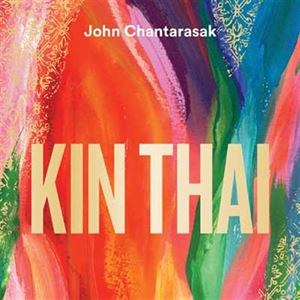
Credits: This is an edited extract from Kin Thai by John Chantarasak published by Hardie Grant London RRP $45
Photo Credits: This is an edited extract from Kin Thai by John Chantarasak published by Hardie Grant London RRP $45



